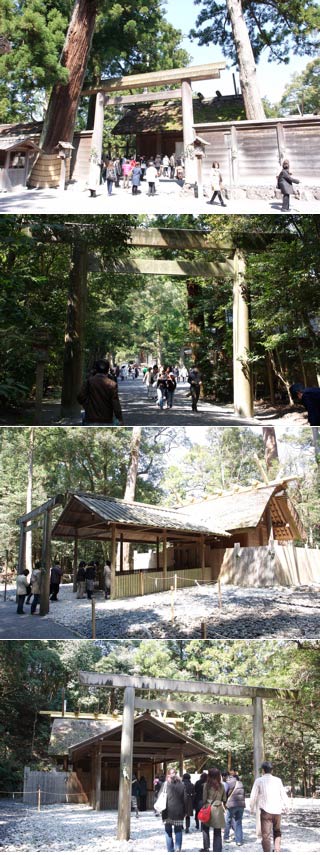Enshrines: Toyouke Omikami.
Geku was established in A.D. 477 in keeping with a divine decree of Amaterasu Omikami. It is dedicated to Toyouke Omikami, the god of clothing, food and housing, who is the provider of sacred foods to Amaterasu Omikami. The structure of the sanctuary of Geku is essentially the same as naiku's, and its annual ceremories follow the only in Geku sacred food offerings are made every morning and afternoon in the mikeden.These offerings of sacred foods are made to Amaterasu Omikami, enshrined in naiku, by Toyouke Omikami.Geku, like Naiku, is one of the main sanctuaries of Jingu, which consistues a single system.
The Shikinen Sengu
Every sanctuary in Jingu consists of two identical adjoining sites. Since the seventh century, with only a few exceptions, Naiku, Geku and their respective auxiliary sanctuaries have been rebuilt and the symbols of the god (Goshintai) they enshrine have been ceremoniously transferred in solemn noctural ceremonies from the old sanctuary building to newly reconstructed buildings in their adjoining sanctuaries. This ceremonial system, referred to as Shikinen Sengu, is thought of as an elaborate Kannamesai ceremony. It involves the reconstruction of the sanctuary building as well as the renewal of the sacred apparel and treasures which are carried to the new sanctuary buildings along with the symbol of the god on the occasion of the Sengyo (Transfer) ceremony. By performing the Shikinen Sengu every twenty years, the Japanese people receive renewed blessings from their god and pray for peace in the world.






